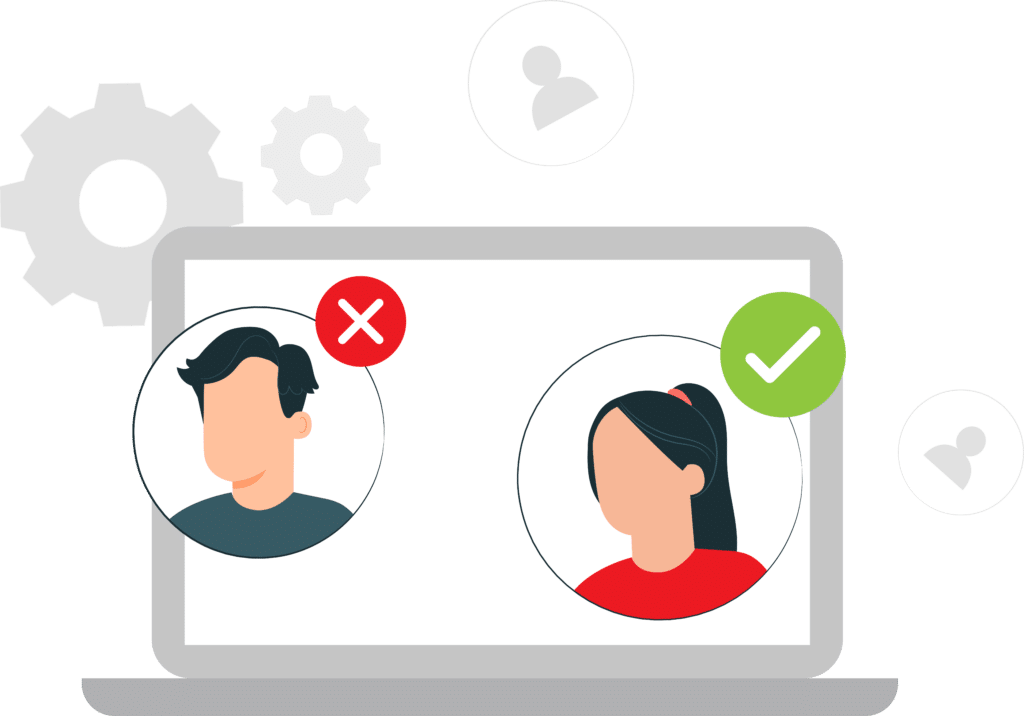HR guide
Chapter 04
Onboarding and offboarding
Onboarding and offboarding are two critical processes in the employee lifecycle. Onboarding is the process of integrating a new employee into an organization, helping them adjust to their new role and environment, and setting them up for success in their new position. Offboarding, on the other hand, is the process of managing an employee’s departure from the organization, including the necessary administrative tasks and procedures, such as exit interviews and final paychecks.

The importance of onboarding and offboarding
Onboarding and offboarding are critical processes that can have a significant impact on an organization’s success. Here are some reasons why these processes are so important:
Enhancing employee engagement and retention: Effective onboarding can help new employees feel welcome and valued, which can increase their engagement and job satisfaction. This can lead to higher retention rates, as employees who feel connected to their organization are more likely to stay long-term. Similarly, a well-executed offboarding process can leave departing employees with a positive impression of the organization, potentially leading to positive word-of-mouth recommendations and increased retention of remaining employees.
Improving productivity: A good onboarding program can help new employees become productive members of the team more quickly, reducing the time it takes for them to get up to speed and start contributing to the organization’s goals. Similarly, a smooth offboarding process can ensure that departing employees complete all necessary tasks and procedures efficiently, minimizing any disruptions to the organization’s workflow.
Reducing costs: Employee turnover can be costly for organizations, both in terms of time and money. Effective onboarding and offboarding can help reduce turnover by improving employee engagement and satisfaction and by providing valuable feedback to the organization to help address any issues that may be contributing to turnover.
Protecting the organization: An effective offboarding process can help protect the organization’s assets, such as confidential information and intellectual property, by ensuring that departing employees complete all necessary security procedures and hand over any company property.
Onboarding process: from pre-boarding to post-boarding
Effective onboarding is a process that begins before a new employee’s first day and continues for several months afterwards. Here are the key stages of the onboarding process:
Pre-boarding: This stage occurs before a new employee’s first day and involves setting expectations and providing information to ensure a smooth transition. This can include sending welcome emails, providing information about the organization and its culture, and sharing details about the employee’s role, responsibilities, and schedule.
Orientation: This stage occurs on the employee’s first day and involves introducing them to the organization and its policies, as well as providing an overview of their role and responsibilities. Orientation can include a tour of the workplace, introductions to colleagues and managers, and training on any necessary tools or systems.
Training and development: This stage involves providing ongoing training and development opportunities to help the new employee develop the skills and knowledge they need to be successful in their role. This can include job-specific training, as well as training on company policies, procedures, and values.
Performance management: This stage involves setting goals and expectations for the new employee and providing feedback and coaching to help them achieve those goals. This can include regular check-ins with the employee’s manager, as well as formal performance evaluations.
Post-boarding: This stage occurs several months after the new employee’s start date and involves checking in to ensure that they are continuing to feel supported and engaged. This can include gathering feedback from the employee and making any necessary adjustments to the onboarding process.

What things should an HR professional consider when making an employee onboarding program?
An effective employee onboarding program is critical for ensuring that new hires feel welcomed, equipped, and empowered to contribute to their organization. As an HR professional, there are several things you should consider when making an employee onboarding program:
Define clear goals: Determine the objectives of the onboarding program. What do you want the new employees to know and achieve by the end of the onboarding process? This will help you tailor the program to the specific needs of the company and the new hires.
Develop a structured plan: Establish a comprehensive onboarding plan that outlines the onboarding process. The plan should include orientation sessions, company history, culture, policies, benefits, and training. Establishing a timeline for the onboarding program can also help to ensure that new hires have a smooth transition.
Assign a mento: Assign a mentor to help the new employee acclimate to the company culture and job requirements. This can be someone from the same department, with whom the new employee can ask questions and seek guidance.
Customize the program: Every new hire is unique, and so should be their onboarding experience. Customize the onboarding program to suit the individual’s job role, experience, and learning style. For example, a new employee with extensive experience in the industry may need less training than a recent graduate.
Incorporate feedback and evaluation: Incorporate feedback and evaluation mechanisms to assess the effectiveness of the onboarding program. You can conduct surveys, check-ins, and assessments to gather feedback and evaluate the program’s success.
Integrate technology: Use technology to streamline the onboarding process, reduce paperwork, and improve efficiency. This can include electronic forms, digital signatures, and online training modules.
Stay connected: Stay connected with new hires beyond the onboarding process. Schedule regular check-ins with new employees to ensure that they continue to feel supported and are adjusting well to their new role.
Offboarding process: From announcement to exit
Effective offboarding is a process that begins with the announcement of an employee’s departure and continues until their final day. Here are the key stages of the offboarding process:
Announcement: This stage involves notifying relevant parties, such as the employee’s manager, team members, and HR, of the employee’s departure. It may also include preparing a transition plan to ensure a smooth handover of the employee’s responsibilities.
Exit interview: This stage occurs on the employee’s final day and involves conducting an exit interview to gather feedback on the employee’s experience with the organization. This feedback can be used to identify areas for improvement in the onboarding process and other aspects of the organization.
Offboarding asks: This stage involves ensuring that the departing employee completes all necessary tasks, such as returning company property, updating documentation, and completing any outstanding projects. This may also include revoking access to company systems and accounts.
Final compensation: This stage involves ensuring that the departing employee receives all final compensation, such as salary, unused vacation time, and any other benefits owed to them.
Evaluation: This stage involves evaluating the offboarding process to identify areas for improvement and ensure that the organization is learning from the departure of the employee. This feedback can be used to make adjustments to the offboarding process and improve future offboarding experiences for employees.
What things should an HR professional consider when making an employee onboarding process?
An effective employee onboarding process is crucial for setting new hires up for success and helping them become productive members of the team. As an HR professional, here are some important things to consider when creating an employee onboarding process:
Pre-boarding: Consider starting the onboarding process before the new employee’s first day. This can include sending a welcome email or package, providing access to company resources, and introducing them to their future colleagues.
Company culture: Ensure that the new hire understands the company culture and values. Provide them with information about the company’s mission, vision, and goals, and share stories that illustrate the culture in action.
Job expectations: Clearly define the new employee’s job responsibilities and expectations. This can include their job description, key performance indicators (KPIs), and goals for the first few months.
Training and development: Develop a training plan that covers the necessary skills and knowledge the new employee needs to succeed in their role. This can include job-specific training, soft skills training, and compliance training.
Paperwork and compliance: Ensure that the new hire completes all the necessary paperwork, such as tax forms, employment agreements, and company policies. This can also include compliance training on topics such as harassment prevention and workplace safety.
Technology and tools: Provide the new employee with the necessary tools and technology to perform their job duties effectively. This can include a computer, phone, software licenses, and access to company systems.
Mentorship and support: Assign a mentor or buddy to help the new employee adjust to their new role and the company culture. This person can answer questions, provide guidance, and offer support throughout the onboarding process.
Feedback and evaluation: Incorporate feedback and evaluation mechanisms to assess the effectiveness of the onboarding process. This can include surveys, check-ins, and assessments to gather feedback and evaluate the new hire’s progress.
Best practices for employee onboarding and offboarding
Employee onboarding and offboarding are critical processes that every organization needs to implement effectively. Here are some best practices for both processes:
Employee Onboarding
The onboarding process is crucial for new hires as it sets the tone for their experience in the organization. Here are some best practices for employee onboarding:
- Create a detailed onboarding plan that covers all aspects of the job, including the company culture, policies, procedures, and expectations.
- Assign a mentor to the new employee who can guide them through their initial weeks.
- Conduct regular check-ins with the new hire to gauge their progress, address any concerns they may have, and provide feedback.
- Use technology to streamline the onboarding process, such as e-signature software for paperwork and an online training portal for orientation and training.
Employee offboarding
Offboarding is the process of separating an employee from the organization. It is just as important as onboarding and requires careful planning to ensure a smooth transition. Here are some best practices for employee offboarding:
- Conduct exit interviews to understand why the employee is leaving and to gather feedback that can be used to improve the organization.
- Create a checklist of all the tasks that need to be completed during the offboarding process, such as returning company equipment and deactivating accounts.
- Ensure that all the relevant stakeholders are informed about the employee’s departure and that the transition is as seamless as possible.
- Treat departing employees with respect and dignity, regardless of the reason for their departure, and use the opportunity to maintain a positive relationship with them.
Effective employee onboarding and offboarding are critical for the success of an organization, and these best practices can help ensure that both processes are executed smoothly and professionally.

